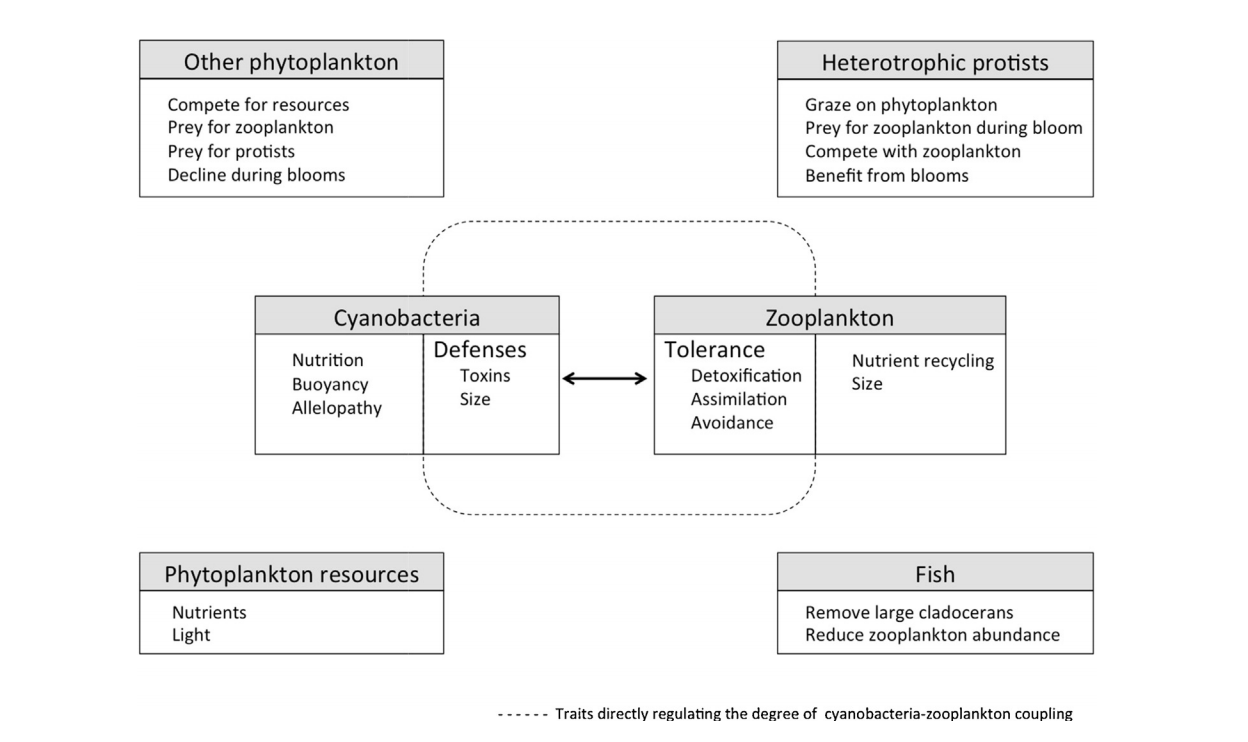Keyword: Local-adaptation

Ger, K. A., P. Urrutia-Cordero, P. C. Frost, L.-A. Hansson, O. Sarnelle, A. E. Wilson, and M. Lurling. 2016. The interaction between cyanobacteria and zooplankton in a more eutrophic world. Harmful Algae 54:128-144. (Clarivate Analytics Web of Science Highly Cited Paper)
Abstract
As blooms of cyanobacteria expand and intensify in freshwater systems globally, there is increasing interest in their ecological effects. In addition to being public health hazards, cyanobacteria have long been considered a poor quality food for key zooplankton grazers that link phytoplankton to higher trophic levels. While past laboratory studies have found negative effects of nutritional constraints and defensive traits (i.e., toxicity and colonial or filamentous morphology) on the fitness of large generalist grazers (i.e., Daphnia), cyanobacterial blooms often co-exist with high biomass of small-bodied zooplankton in nature. Indeed, recent studies highlight the remarkable diversity and flexibility in zooplankton responses to cyanobacterial prey. Reviewed here are results from a wide range of laboratory and field experiments examining the interaction of cyanobacteria and a diverse zooplankton taxa including cladocerans, copepods, and heterotrophic protists from temperate to tropical freshwater systems. This synthesis shows that longer exposure to cyanobacteria can shift zooplankton communities toward better-adapted species, select for more tolerant genotypes within a species, and induce traits within the lifetime of individual zooplankton. In turn, the function of bloom-dominated plankton ecosystems, the coupling between primary producers and grazers, the stability of blooms, and the potential to use top down biomanipulation for controlling cyanobacteria depend largely on the species, abundance, and traits of interacting cyanobacteria and zooplankton. Understanding the drivers and consequences of zooplankton traits, such as physiological detoxification and selective vs. generalist grazing behavior, are therefore of major importance for future studies. Ultimately, co-evolutionary dynamics between cyanobacteria and their grazers may emerge as a critical regulator of blooms.